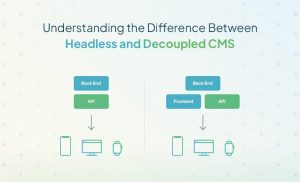Proper Blog Writing can lead to media attention and new business.
Watch this short video and read my steps to writing a Blog post.
The key to successful social media marketing rests in the power and delivery of strong content, driven from a specific strategy around market position. For many B2B small businesses, advanced content marketing, market automation, social media advertising and so on is just not a reality.
This also holds true for many soloprenuers. I have had many of both my LinkedIn individual coaching clients and Personal Branding consult clients ask me to help them to start in the area of Blogging and writing for the LinkedIn writing platform. If you fall into this category, these Blogging Guidelines are for you. So cut and paste, save, share with other solo and small business owners you know.
Guidelines for Blogging as a Small Business Owner
1. Identify your content market position and stick with it.
This is probably the most difficult place to start. Review your client profiles, your revenues to date and where your company strengths lie. Identify what your market position as a company and what main topic you can write about in the long term. Obviously, this is not a detailed Digital Marketing Plan, but these are some initial tips that can get you going in the right way to begin crafting your Content Plan.
2. List out your Blog Categories.
Blogging over time can create a true library of content. When you first start, you should list out what categories of topics you could write about and eventually, own. As an example, and one of my personal B2B Marketing favorites is the Marketo Blog. You will see there that they list out catgories related to Market Automation as
In these they build out over time, and strategically, valuable content that educates their prospects and influencers, thus building a library that supports their market position.
3. Begin small and even with an off site Blog
Of course, you are not expected to write a library of content immediately. You need to choose one category, one sub category, one topic that you can begin to write about. Think in terms of series, such as part 1, 2 and 3 of a blog series, where each individual post leads to the other and further, to specific content areas on your website. If you are just beginning to blog, I would recommend that you start a Blog off-page, meaning a Blogger or WordPress site off your website. In this way, you can start to write , even in draft format, to start building your content.
4. Follow standard blogging best practice guidelines. These include:
- Creating a title with your targeted keyword phrase. Your targeted keyword phrase needs to support your SEO strategy and content plan. You can learn how to develop your SEO plan with a read of my post on SEO for 2015.
- The title should be less than 70 characters.
- For example in this Blog post, the title is “Guidelines for Proper Blog Writing”. The target keyword is Blog Writing. This is because I offer services in Blogging for my clients.
- The Blog post should include 400-500 words and engaging multi-media. This can be an image , video or infographic or custom graphic. In this example, I have provided a video on why Blogging supports Online PR and a way for business owners to engage with targeted journalists.
- The Blog post should follow conventional writing rules including:
- A lead paragraph introducing the importance of the subject and what the post will discuss.
- 2-3 Body paragraphs to support and explain the lead paragraph
- A conclusion or summary and a call to action to engage
- A lead paragraph introducing the importance of the subject and what the post will discuss.
- When writing a post, you should consider and commit to the writing persona. In general, in opinion posts 1st or “I” led posts work well. If you write more in article or educational format, you can consider 3rd or they. If guidelines or directions, 2nd or you person works well.
- You should also consider how the post will be shared. Deploying social sharing tools like the ones on the bottom of this post can help to get your post shared.
- Within the body of the post , use your targeted keyword only 2-3 times as appropriate and as contextually relevant for the reader.
These guidelines will get you started.
(344)
Report Post





